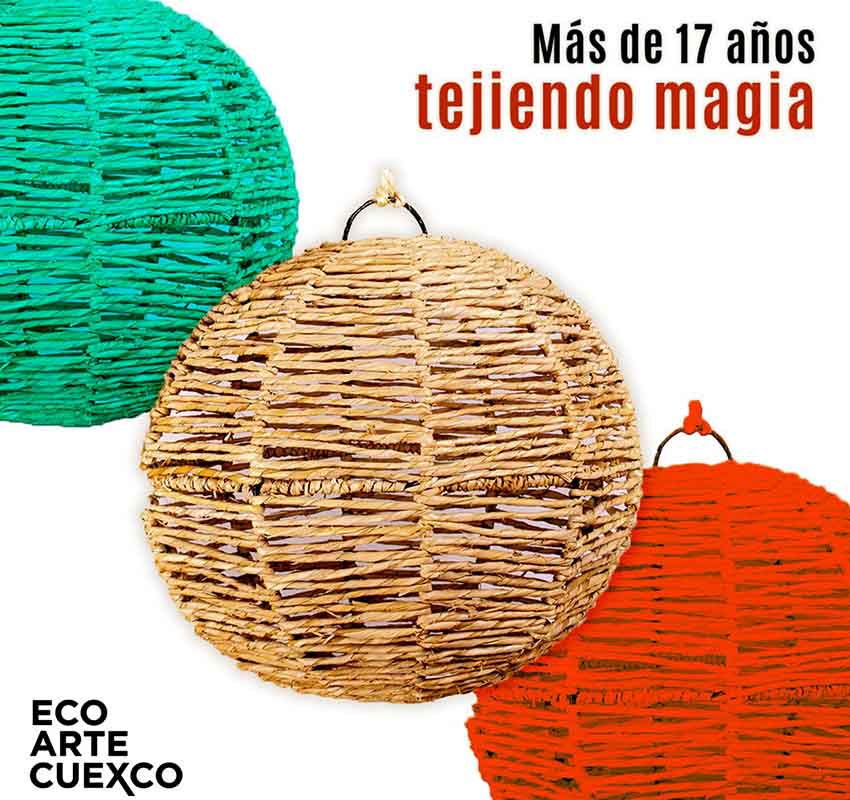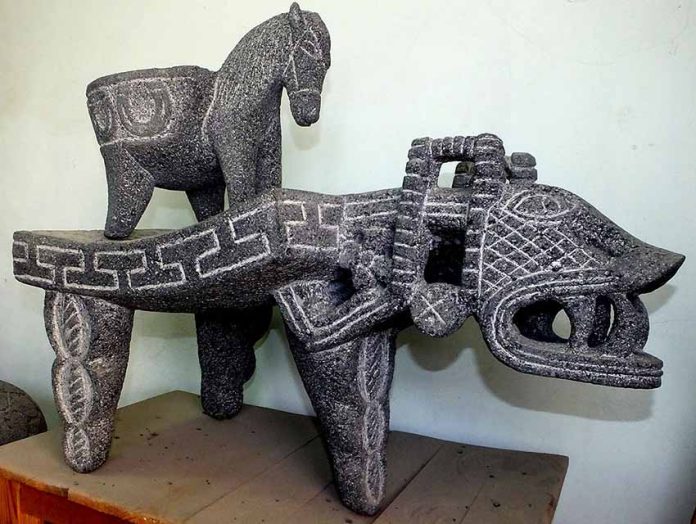YouTube video blogger Luigi Medina is dangerous. Don’t believe me? Watch one of his videos about interesting sites in the “Magic Circle” around Guadalajara, and you’ll find yourself possessed by a mysterious force to climb into your car — and off you go!
Case in point: I thought I knew about all the artisans hidden away in the little towns surrounding Lake Cajititlán — located 25 kilometers due south of Guadalajara — but Medina’s video blog introduced me to two more creative souls I couldn’t resist visiting.
The first is a sculptor of basalt rock named Juan Pérez. I believe he is badly misnamed, as “Juan Pérez” is the Mexican equivalent of John Doe. But this Juan Pérez is an amazingly talented artist, not at all your average man on the street.
Pérez’s workshop, called Taller El Camichín, can be found just outside San Juan Evangelista, along the south shore of Lake Cajititlán.
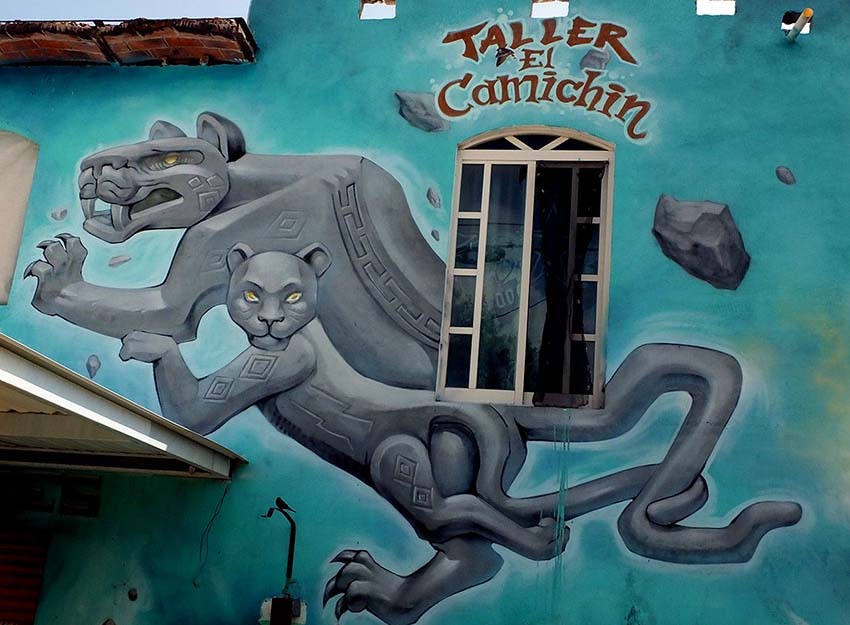
I went there on a Sunday, and, even though the workshop was closed, neighbors said, “No hay problema! We will call him.”
A few minutes later, Juan Pérez drove up and welcomed us with a big smile.
San Lucas is famous for its molcajetes (mortars and pestles for making salsa) and metates (flat stones for grinding grain), both hand carved from the local basalt rock. Inside El Caminchín, we saw plenty of these, but also a collection of imaginative creations that told us, “Here can be found a true artist.”
I asked Pérez how he became a sculptor. “My parents,” he told me, “were farmers, and they wanted me to follow in their footsteps, but I’d go over to visit my uncle, who sculpted basalt.
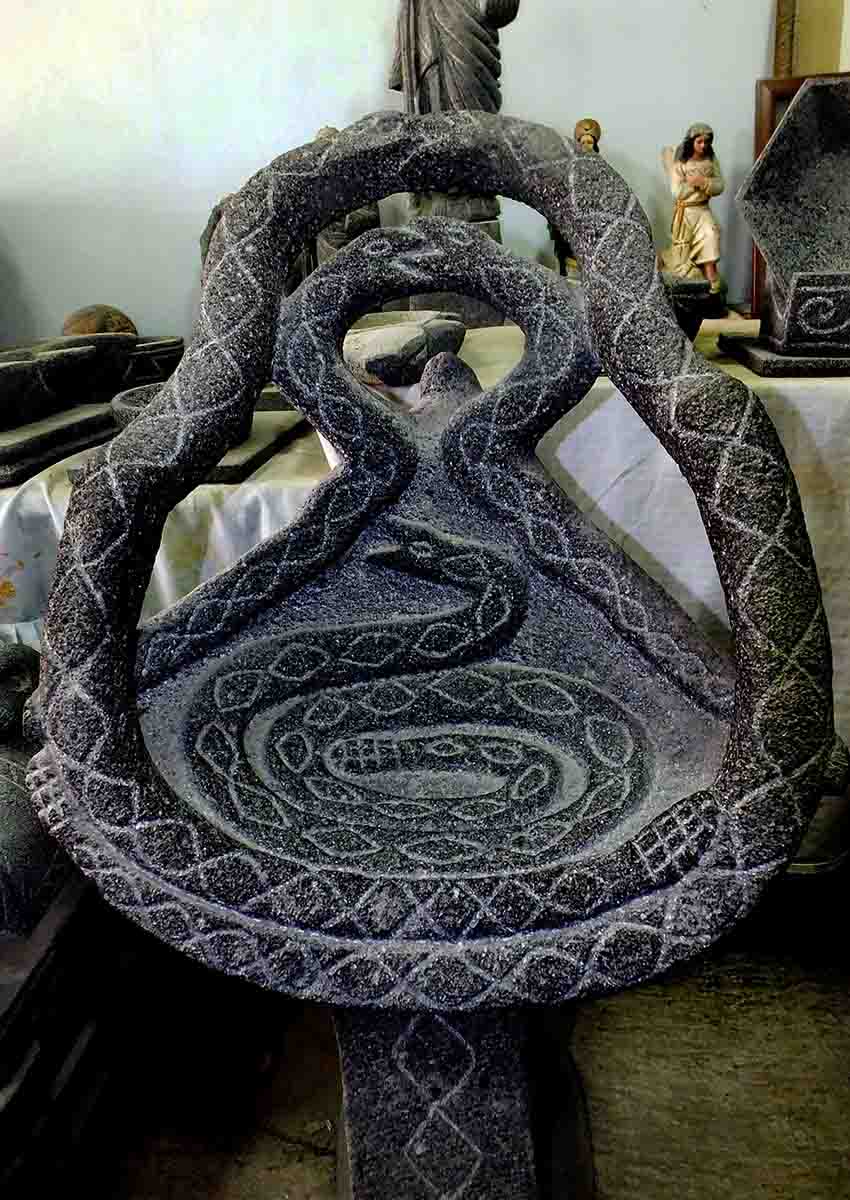
“I started out making caballitos (little horses), and after that, I let my imagination run wild. The truth is that I’m no good at copying. Whatever I make has to come out of my own head.”
Then Pérez showed me what’s in his head: a chair made of rattlesnakes — yes, a full-sized chair carved out of a big block of basalt rock. “I’m delighted when I get ideas like this,” he said.
He immediately began describing each individual snake in his creation in great detail.
“These two snakes are sleepy; they can hardly keep awake. These other two are in love. They’re full of passion; just look how happy they are!” he said. “Now, this other snake is angry she has no mate and she’s all alone.”
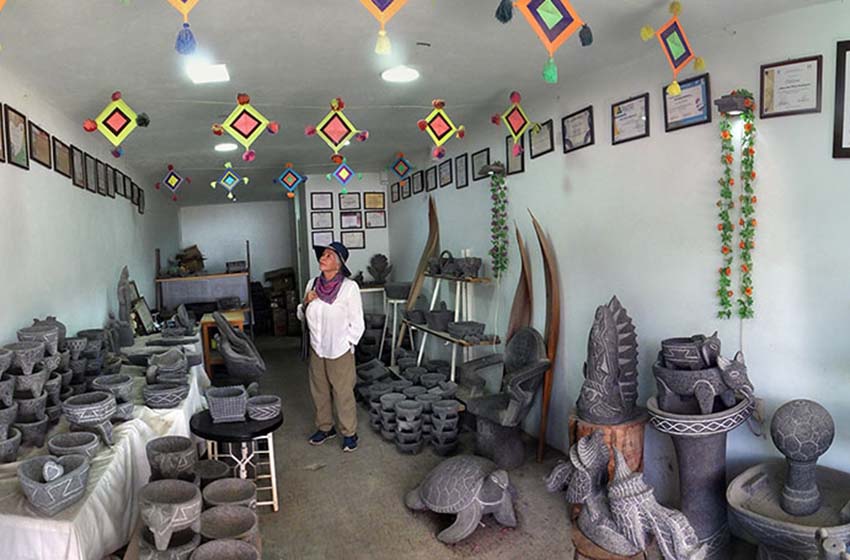
Pérez’s walls are covered with awards.
“A lot of my sculptures ended up in England,” he told me. “A young Brit who called himself Simon would come to my studio twice a year, and he would carry off all my innovations. Every time I came up with something new, he wanted it.”
Pérez showed me a photo of an elegant sort of bird feeder where birds can also drink water. Pérez said that Simon loved this piece, bought it and then asked for its name, which he would need for registering it and for going through customs.
Pérez told him, “Well, I think I’m going to call it El Huevo Loco (the Crazy Egg).”
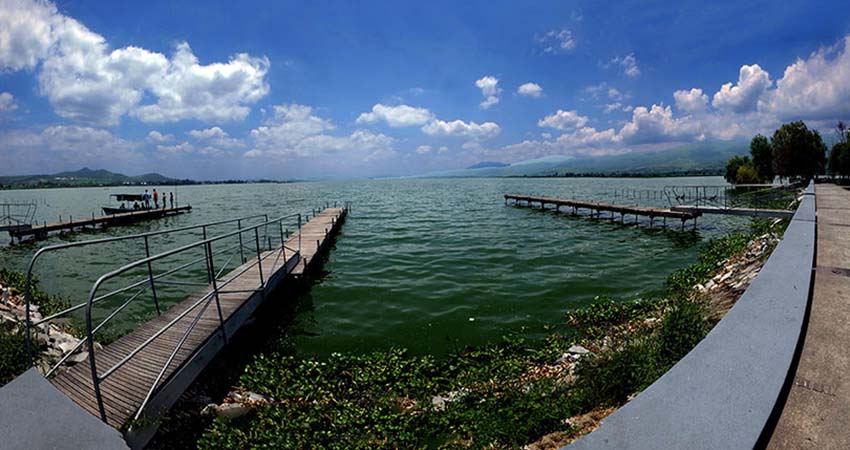
“But,” he continued, “I was just joking, and then I said to Simon, ‘Please help me to give it a real name.’ And he looked at me and said, ‘No, no, this one is going to be called El Huevo Loco, and that’s all there is to it!’ And he took that piece off to England and some Germans bought it, and then later they published a book and decided to put my Huevo Loco right on the cover. Later, they sent me a copy. It’s one of the most beautiful books I’ve ever seen.”
One day, Pérez told me, a Mexican architect who designs houses in tourist areas saw this book, loved the concept and asked him, “Can you make me sinks that look like this?”
“So,” said Pérez, “I ended up making forty bathroom sinks for him. I made them deeper, of course, and with a hole for the drain. So he set them in a base made of mesquite wood and sent me pictures, and you can’t believe how beautiful they look!”
Taller el Camichín is open from 10 a.m. to 4 p.m. every day, and the mobile phone of this far-from-ordinary Juan Pérez is 331-384-3900.
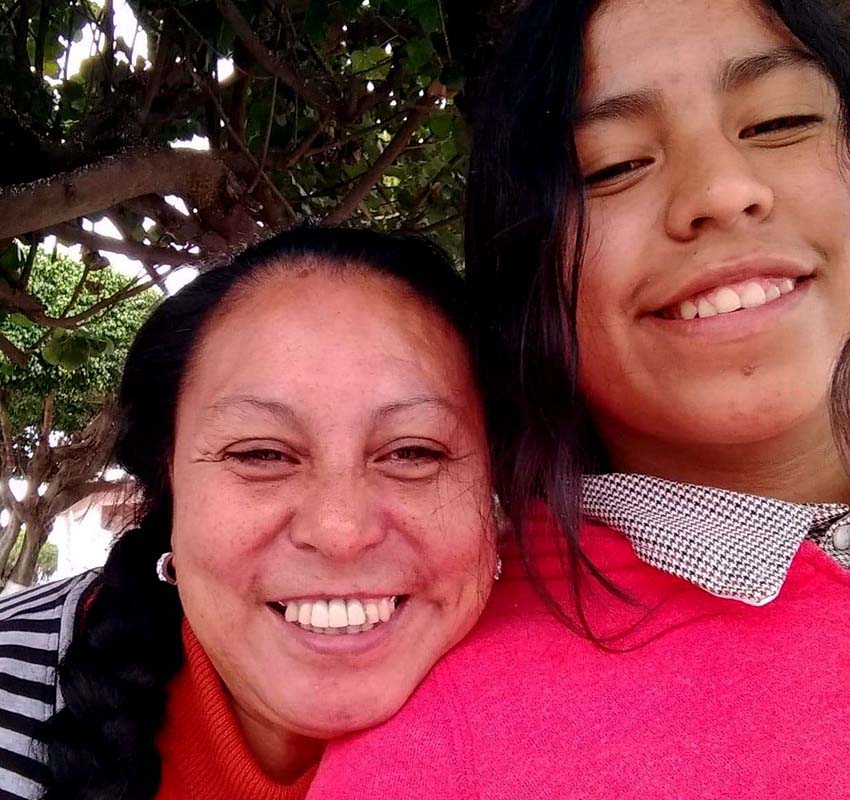
The second of these artisans who had previously escaped my attention is Noemí Enciso, who carries out her creative endeavors in the little town of Cuexcomatitlán, located at the west end of Lake Cajititlán.
Noemí told me she learned from her bisabuelo (great-grandfather) how to weave tule (also called tule in English), a reed or bulrush that grows everywhere in Lake Cajititlán. Long ago, he used to make sopladores (hand fans used to keep a fire going) and petates (sleeping mats that were also used as burial “coffins.”)
When she grew up, Noemí married and started a family, but her husband abandoned her, and she ended up in the home of her grandparents, who were weaving reeds to make chairs. They encouraged her to learn the skill.
When opportunities later came along to learn more weaving techniques, she took advantage, even following the teachers around.
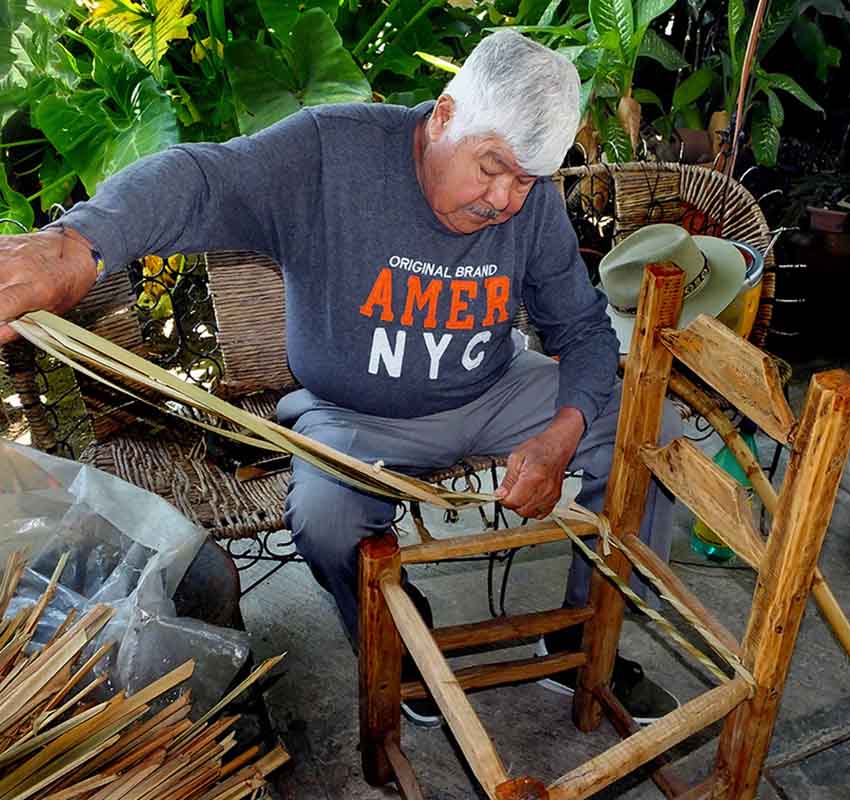
“It was necessity that forced me to learn how to do this, but afterward it was pure pleasure: I love it!”
Thanks to her craft, Naomí Encisco was able to raise her children, and soon she began teaching her skills to others, starting her own business called Eco Arte Cuexco.
“We make handicrafts and also hold workshops on ecological themes,” she said.
She works with three other women and her father, weaving tule reeds from Lake Cajititlán as well as rattan, palm fronds and lianas, to make chairs, lamps, jars, picture frames, and all kinds of baskets colored with natural tints like cochineal.

Eco Arte Cuexco was chosen to decorate the terraza (terrace) of Guadalajara’s widely acclaimed Santo Coyote Restaurant. And foreigners living around Lake Chapala have found out what she and her friends do, “so our work is being carried off to lots of faraway places,” she said.
“Believe it or not, you can now find our work at a hotel in Dubai.”
The writer has lived near Guadalajara, Jalisco, since 1985. His most recent book is Outdoors in Western Mexico, Volume Three. More of his writing can be found on his blog.
